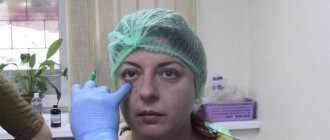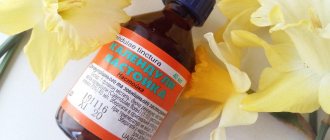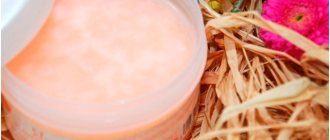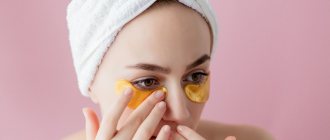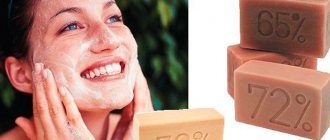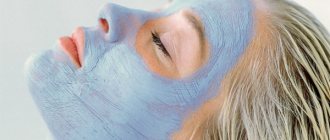Especially for those who do not have time to sunbathe on the beach, cosmetics have been developed that allow you to get a beautiful golden or bronze skin tone without the participation of ultraviolet radiation. Self-tanner provides an even tan a few hours after application and retains the result for up to three weeks. The most important thing is to choose cosmetics from leading manufacturers that guarantee impeccable quality and safety for human health. Next, we will take a closer look at how self-tanning works, its benefits and harms.
Self-tanning: harm and benefit
Self-tanning: harm or benefit?
We need to learn how to properly use special cosmetics that we use to treat exposed skin to get a beautiful tan with maximum benefits for the body. Most self-tanners contain natural ingredients, namely sugar beet or cane extract, which provide a golden, bronze or chocolate-colored skin tone. However, there are reasons to think carefully.
The main disadvantages of self-tanning:
- Such cosmetics provide only an even tan and do not protect the skin from the negative effects of ultraviolet radiation.
- The composition may contain alcohol, which accelerates the drying process of cells. Eventually, premature wrinkles appear.
- In addition, allergic reactions to the main components of cosmetics may occur. Therefore, before use, you should carefully read the composition on the package and test the product on a small area of skin. If the first negative reactions appear on the skin, you should stop using self-tanning.
- Products with a thick consistency can clog pores, leading to the development of acne.
- During pregnancy, the main elements of self-tanning can penetrate through the blood to the fetus, negatively affecting its development.
Original high-quality self-tanning: harmful or not
Does self-tanning benefit or harm the skin? Such products contain mainly components of plant origin that do not harm the skin. In this case, you should carefully read the composition in order to promptly identify harmful components that cause allergic reactions.
In addition, you need to pay attention to the manufacturer. Leading manufacturers necessarily test their cosmetics, check the safety of the main components and have quality certificates. Products of unknown origin can be harmful to health. Therefore, you should not buy self-tanning products from dubious stores that cannot guarantee safety. Before use, be sure to test any cosmetics on a small area of skin in order to notice negative reactions in time.
Also interesting is Self-tanning for ballroom dancing, instructions for use
In addition, most consumers mistakenly believe that self-tanning not only turns the skin a beautiful chocolate shade, but also protects against the negative effects of ultraviolet radiation. In fact, this is not true. On the contrary, dark skin attracts the sun's rays, which can lead to dry skin and sunburn. To avoid all these unpleasant symptoms, it is recommended to choose a self-tanner with protective filters from the sun. Otherwise, you need to protect your body with clothing or sunscreen cosmetics.
Long-term use of self-tanning due to the content of alcohols or other chemical elements can lead to dry skin. Body moisturizers will help correct the situation.
Nuances of using the cream
To get the desired result, you should take into account the recommendations of specialists:
- Prepare the skin in advance. It must be clean and dry. It is advisable to scrub, especially dry and rough areas.
- You need to bathe with soft gels and a washcloth. Aggressive products may cause uneven rinsing.
- Apply only to dry skin in a cool room to prevent the body from sweating. After a shower you need to wait 20-30 minutes.
- Self-tanning cream should only be applied with special gloves. In addition, hands, elbows and knees should be pre-moistened and lubricated only for the second use.
- Hair removal should also be done at least a day before self-tanning.
- It is advisable not to divide the body into zones, but to immediately cover it with an even layer. Apply the self-tanner in a thin layer. This way there will be no transitions or boundaries.
- Hair must be removed from the face and a special strip must be worn. Self-tanning on the face should be applied as carefully as possible, especially if the hair is light.
- There is no need to buy products that are too cheap and from unknown manufacturers, as the effect of them can be unpredictable.
- Some people have doubts about whether self-tanning is harmful to the face. If you use special products for this area, the product is completely harmless. Self-tanning for the face contains more delicate pigment particles.
We recommend reading the article about choosing between a solarium and self-tanning. From it you will learn what is better - self-tanning or solarium, what is more harmful for the body, whether self-tanning can really replace a solarium and alternative methods. And here is more information about self-tanning on the face.
When asked whether auto-bronzant is harmful, the answer is no. Such means have their own disadvantages and nuances. But when used correctly, the harm is much less than from the sun and solarium. By choosing a quality product, you can get a beautiful and even tan at any time of the year.
Contraindications and precautions
Self-tanning is not recommended for use in the following cases:
- Skin diseases of chronic origin, such as eczema, diathesis or psoriasis. Application may affect the development of the disease and aggravate the situation.
- Scratches, cracks, pimples, open wounds.
- Self-tanning with a thick consistency can clog pores and cause acne.
- Malignant tumors, pigment spots and other neoplasms on the skin.
- During pregnancy and lactation, you should definitely consult a specialist.
Question answer
Choose the option that is most convenient for you to apply. Some prefer to rub the cream into the body, others choose a spray with a spray, and others are more accustomed to carrying a pack of wet wipes soaked in self-tanning product.
This is influenced by the individual characteristics of the skin and other factors. Often the effect lasts about 4-5 days. Then the skin begins to lighten back. The fact is that such a product affects exclusively the upper layers of the skin, and they, as you know, die and peel off over time. But there are expensive products on sale; the results after using them can last up to 2 weeks.
It's worth learning how to use self-tanner correctly, otherwise you run the risk of uneven shade or spots. This is one of the disadvantages. It is also worth noting that the effect does not last long (on average, the tan is washed off after 4 days). But such a product does not harm health, which cannot be said about UV rays.
What is more harmful: self-tanning or solarium?
Can I use self-tanner?
This question interests everyone who cares about the health of their skin.
Most self-tanning manufacturers use ingredients of natural origin, which, when interacting with the skin, provide a beautiful tan. In this case, the skin must be clean, without defects, in order to ultimately obtain a uniform shade.
It is harmful to use self-tanning when there is a risk of allergic reactions, open wounds or other defects on the skin. In addition, self-tanning tends to come off along with dry skin cells and can irritate the epidermis. During pregnancy, active components have the ability to penetrate through the blood to the fetus, negatively affecting its proper development. Therefore, you need to choose self-tanner only from trusted manufacturers and test it before use.
It is also interesting How to tan without a solarium and the sun, folk methods, instant tanning
Compared to self-tanning, a tan obtained in a solarium lasts three times longer on the skin, which is its significant advantage.
Tanning in tablets
Other self-tanning products are even less harmless than DHA. For example, so-called Tanning Pills, which are not approved for use or approved with restrictions, but are sold through online stores. The most common active ingredient is the keto-carotenoid canthaxanthin.
. In particular, the FDA has banned tanning pills containing canthaxanthin in dosages well above the permitted dosage due to their significant side effects when ingested in large quantities. Characteristic effects of taking canthaxanthin are red stools and orange palms and soles. Some of the side effects include gastrointestinal distress, hives, hepatitis, retinopathy (in about 12% of users), and the potentially fatal aplastic anemia. A clinical case with a fatal outcome after the use of canthaxanthin by a young woman is described.
Current routes of drug distribution make monitoring toxic effects difficult. Therefore, the incidence of side effects associated with canthaxanthin use is unknown. Canthaxanthin has a strong effect on the physical properties of lipid membranes, which may explain its toxic effects. Even if the existing risk of toxic effects is small, the use of the drug for cosmetic purposes is unjustified.
Note ed.: The study of canthaxanthin-dependent retinopathy that the author mentions was conducted 40 years ago on a small sample. These cases of retinopathy did not lead to any changes in vision.
Another common ingredient in tanning tablets is β-carotene.
. It enters the body naturally when eating fruits and vegetables and contributes to the formation of yellow pigment in human skin. Its deposition in the skin is believed to protect against the harmful effects of both natural and artificial UV radiation, increasing the skin's resistance to sunburn. On the other hand, taking additional amounts of β-carotene is known to increase the risk of lung cancer in smokers, and drinking alcohol with β-carotene may reduce its ability to be converted into retinol and possibly lead to hepatotoxicity, cardiovascular complications, and carcinogenesis. To obtain an effect similar to a tan, β-carotene is taken at 120 mg per day, while the physiological daily requirement of adults is only 5 mg. It is easy to calculate how many times the norm is exceeded.
Note ed.: Today there is no evidence of the danger of combining alcohol with β-carotene. This statement can only be considered a valid hypothesis. In contrast, the claim that supplemental β-carotene intake increases the risk of lung cancer in smokers has indeed been confirmed.
Benefits of self-tanning
Benefits of self-tanning:
- You can get a beautiful tan without the negative effects of ultraviolet rays. This is the first and significant advantage of self-tanning compared to natural tanning and solariums. The cosmetics contain extracts of sugar beet or cane, which react with skin cells, providing a beautiful shade.
- Within a few hours after applying the product, a bronze, golden or chocolate tint appears on the skin. To get this result in a solarium you need to attend several sessions.
- In addition, the cost of self-tanning is several times lower compared to a solarium.
- There is no need to leave home, waste time and money on travel, to get a beautiful tan at home.
...and ampoules for Barbie
The most powerful and dangerous self-tanning products are peptide analogues of α-MSH, a hormone that stimulates α-melanocytes. α-MSH is produced by the pituitary gland and is one of the most important melanocyte-stimulating hormones (MSHs) responsible for skin and hair pigmentation in mammals. It also influences eating behavior, sexual activity and energy homeostasis.
Studying α-MSH, in 1980 a group of American scientists synthesized its more active derivative, which can cause skin pigmentation without exposure to sunlight. This compound is called melanotan 1
(melanotan, “melano-tan”,
syn
. afamelanotide) (Fig. 1).
Rice.
1. Amino acid sequences of α-MSH and its analogues; The common minimal biologically active sequence is highlighted in blue. Afamelanotide is a peptide closely related to α-MSH. This drug enhances pigmentation and, in the form of a subcutaneous implant, is approved for the treatment of erythropoietic protoporphyria (a disease characterized by increased sensitivity to sunlight). Afamelanotide may cause darkening of pre-existing pigmented lesions, which requires appropriate medical monitoring. Side effects include headache (20%), migraine, dizziness, nausea (19%), itching and implant site reactions (21%); often - from ≥ 1% to < 10% - back pain, upper respiratory tract infections, decreased appetite, weakness, drowsiness, feeling hot, abdominal pain, diarrhea, vomiting, redness of the skin, development of warts, spots and freckles. There is a case report of 22-hour priapism following subcutaneous injection of an unknown dose of afamelanotide purchased from a sports nutrition store as a sunscreen.
Note ed.: However, the frequency of such cases remains unknown.
Varying the structure of α-MSH derivatives led to the creation of a new highly active cyclic peptide, melanotan 2, which is thousandfold superior to native α-MSH (Fig. 1). Melanotan 2 is distinguished by a special arrangement of amino acids.
Melanotan 2 also causes sexual stimulation, which is sometimes uncontrollable. This is due to the effect of the drug on the central nervous system. Unlike the popular drug for the treatment of erectile dysfunction, the phosphodiesterase inhibitor sildenafil, which acts at the peripheral level, after taking Melanotan 2, a lasting effect occurs even without sexual stimulation. Overdose is relatively common and usually leads to hospitalization due to priapism. A clinical case of an overdose of melanotan 2 (10 mg), which led to eight hours of priapism accompanied by vomiting, is described. The effects of Melanotan 2 on sexual function have been studied as one approach to the treatment of erectile dysfunction and have been found to be dose-dependent. Flushing, loss of appetite, nausea and vomiting are additional side effects of the drug. Interestingly, a structurally similar derivative, bremelatonide (Fig. 1), is specific for sexual stimulation and is used for hypolibidemia (decreased libido) in premenopausal women. Like other α-MSH analogues, it can cause focal hyperpigmentation. Melanotan 2 has become widespread and is often mentioned in the news under the slang name Barbie drug.
- “a drug for Barbie.”
All of the listed products are not without toxicity, manifested in the occurrence of renal dysfunction, rhabdomyolysis, encephalopathy and sympathomimetic symptoms. Their frequent use can lead to the development of melanoma, which, for obvious reasons, is not mentioned by the sellers of these products. Cases of the appearance of hyperpigmentation, nevi and melanoma in consumers of illegally purchased melanotan 2 have been described. Thus, a 2015 review examined 21 clinical cases and 18 trials related to the occurrence of side effects after using the drug. The development of melanoma and dysplastic nevi is known to develop after only seven injections of melanotan 2 (Fig. 2). However, previously researchers considered the appearance of tumors to be a coincidence or questioned the content of melanotan 2 in the substances used by patients.
Note ed.: The study authors claim that most side effects are minor, and the presence of direct links between the use of melanotan 2 and melanoma has not yet been established.
Other risks include the possibility of spreading blood-borne infections. As with other illegal drugs, the incidence of adverse effects is unclear.
Rice. 2. Melanoma 5x3 mm in a 23-year-old patient after seven injections of Melanotan 2 (Source: Ong, S. and Bowling, J. (2012), Melanotan-associated melanoma in situ. Australasian Journal of Dermatology, 53: 301–302 )
Melanoma among oncological diseases is in 5th–7th place in terms of frequency of occurrence. The American Cancer Society predicts that there will be about 100,000 new cases of melanoma in the United States in 2020. In Russia in 2022, 12 thousand new cases were registered.
Might be interesting
Neural networks, virtual reality and nanorobots in sperm. What will the medicine of the future be like?
Since when using α-MSH analogs, pigmentation can develop without exposure to the sun, they can be classified as self-tanning products. These compounds are not cosmetic products as they are administered by injection or as subcutaneous implants, although several patents are known for the use of melanotan 2 by application to the skin. Products containing synthetic analogues of α-MSH are sold by unregulated suppliers through online stores on the Internet without prior verification and approval, which makes them even more dangerous due to possible adulteration, the presence of various unknown impurities or non-sterility of the product, which is critical in the case of injectable drugs . In addition, the likelihood of overdose increases due to the unknown exact content of the highly active component. An indicative experiment was conducted in 2015, when a group of experts studied 73 self-tanning products based on melanotan 2 from different online stores. Products from half of the sellers turned out to be significantly contaminated, and their melanotan 2 content was 20–60% lower than declared. Apparently, the vast majority of known cases of serious side effects are due to the use of uncontrolled drugs.
Note ed.: The nature of the identified contaminants and their potential danger remain unknown.
Disadvantages of self-tanning
Self-tanning products also have disadvantages, namely:
- During the first erg, you need to carefully prepare the body to get an even shade. If you do not follow the instructions from the manufacturer, stains and smudges will appear on the body.
- It is not always possible to carry out the procedure for applying a cosmetic product on your own. For example, to apply the product to your back, you need outside help.
- In addition, it is not always possible to guess the end result. Skin tone can be darker or lighter. Therefore, before use, you should definitely test cosmetics on a small area of skin to evaluate the color and identify side effects in time.
- It should be remembered that the effect of the substance may cause allergic reactions. In addition to natural dyes, self-tanning may contain chemical compounds that cause skin irritation. Therefore, before using any cosmetic product, it is recommended to test it on a small area of skin.
- Cheap cosmetics last on the skin for 3 to 5 days. Self-tanning products from leading brands guarantee a beautiful tan for up to three weeks.
- Failure to properly care for your skin can result in the color peeling off in chunks. Spots and streaks will appear.
- After applying self-tanning, you should not use scrubs or take hot baths with hard lips.
- The composition may contain alcohol, which negatively affects the water balance of skin cells. In other words, the cells begin to dry out and die. Therefore, you need to use body moisturizers.
- Self-tanning can peel off unevenly, leaving unsightly spots on the body.
- Self-tanning does not protect the skin from ultraviolet radiation. Of course, you can find cosmetics with protective filters for sensitive skin. These factors need to be taken into account when choosing a self-tanner.
- Self-tanning can leave stains on clothing. You need to wait until it dries completely and only then put on clothes. It is best to carry out the procedure in the morning.
Also interesting: How to choose a self-tanner for the body, advantages, disadvantages and contraindications
Beauty and Tanning
Issues of beauty, physical attractiveness and their criteria have been of concern to people since ancient times. Now the discussion has reached a new level, especially among figures of Western science and culture. Recently, philosophy professor Heather Widdows, who specializes in ethics, published a book arguing that beauty and the pursuit of beauty have become dominant and almost mandatory ethical ideals. The purpose of the work is to establish the nature of the personality in the body, which is transformed through various manipulations from a subjectively defective one into a standard imaginary one.
The book contains several main messages. It begins with an argument that beauty is an increasingly sought-after ethical ideal and outlines its main features. Widdows shows how the concept of “beautiful” is loaded with the meaning of “good.” Another important aspect is the acquisition of a certain intrinsic value by beauty. The ideal of beauty is ethically considered collective because it has become a widely shared moral framework. In addition, beauty standards have become more important than social or some other reasonable norms, and their failure to comply is associated with disgust and contempt from others.
In the chapter A New (Miss) World Order? Widdows argues that, even though there is no single universal ideal of beauty, local ideals tend to globalize, mixing with each other, becoming increasingly homogeneous to meet new global standards. Other scientists also noticed this. A content analysis of cosmetics advertising in British and Kenyan women's lifestyle magazines from 1955 to 1975 (colonial period) and 2000 to 2010 (post-colonial period) showed that changes in British publications confirm that models' skin tones are becoming darker, whereas in Kenyan ones it is lighter. This averaging of preferences confirms Widdows' findings about the desire for a global standard of beauty.
Widdows concludes that as the ideal of beauty expands, it becomes increasingly difficult to make even minimal efforts to be beautiful enough. Widdows acknowledges that sexual objectification is an important part of beauty standards, but she seeks to take sex out of the equation to highlight that it is not necessarily part of beauty ideals and our assessment of those ideals.
Benefits of a solarium
The main advantages of a solarium:
- You can visit the solarium at any time of the year and do not need to travel to warm countries.
- Solariums use artificial ultraviolet rays, which have a similar effect to the sun's rays.
- In a solarium you can get a healthy dose of vitamin D, which is responsible for the strength of the musculoskeletal system.
- In just a few sessions you can get a beautiful tan without the sun.
- The tan lasts on the skin for several months if you care for it properly.
- The duration of the procedure does not exceed 10 minutes. Two to three sessions per week are enough to achieve the desired result.
Is it possible to do self-tanning at home?
There really are self-tanning recipes for the body that you can prepare yourself. Namely:
- Carrot. To do this, grate the root vegetable, then apply the mixture to your face. After half an hour, wash off. This method is suitable for dark-skinned girls.
- Onion peel. First, make a decoction of this component. Pour it into the bathroom and lie there for a third of an hour. To add a bronze color to your face, wash your face.
- Walnut. For home self-tanning, green peel or shell is suitable. In the first case, grind the component and apply it as a mask for a third of an hour. If you decide to use the shell, then combine it with water and leave to boil over low heat for a couple of minutes. The mixture should stand for 24 hours. After which you can wipe the skin with it. The intensity of the shade depends on the amount of shell.
Bronzer: Sleek skin in two brush strokes
Strictly speaking, a facial bronzer is a dark powder. It gives the skin a beautiful tan and a rested look, helps highlight cheekbones and narrow the nose, acting as a contouring agent.
Bronzer, unlike self-tanner, gives the skin a shimmering tint. There are two types of remedy:
- A regular bronzer is not absorbed into the skin, but only gives it the desired shade, like powder.
- The auto-bronzer lasts for several days, giving the skin a beautiful shimmering tan.
Based on texture, bronzers are divided into several types:
- Powder. Pressed, balled or loose powder can contain sparkling particles or be completely matte. Provides a light tanning effect.
- Cream with bronzer. Allows you to evenly distribute the product over the face or body. Has greater durability than powder.
- Bronzer oil. It perfectly moisturizes the skin, suitable for the face and body, but is washed off with salt water and is afraid of sweat.
- Pencil. Cosmetic product for facial contouring, quite durable. Allows you to draw a clearer line than powder.
Bronzer is most often used for the face, but there are products for the body. When purchasing, pay attention to what the cosmetics are intended for.
How to use facial bronzer correctly
- Wash well, apply your usual moisturizer and after 5-10 minutes start applying makeup.
- If necessary, use foundation and concealer to cover imperfections and even out skin tone.
- Apply bronzer in the form of powder or pencil to the hollows of the face: under the cheekbones, a little on the temples and a little under the lower lip.
- You can also walk along the hairline.
- Visually make your nose smaller: Apply a little bronzer along the line from the eyebrow to the tip of the nose along its back.
- The most important thing is to blend the bronzer well. For powder, use a powder puff or large powder brush. Blend the pencil thoroughly with a sponge or foundation brush.
For full contouring, you will also need blush and highlighter. Anna Giron notes that contouring products are denser and more pigmented: “If you want lightness, it is better to use dry and pressed bronzer textures. If you want brightness, you can use cream ones.”
Pros and cons of bronzers
The main advantage of decorative cosmetics is that it can be washed off at any time. Allergies rarely occur with bronzer and can be used by pregnant and breastfeeding women. But the other side of the coin is the lack of resilience. The bronzer will stay on your skin for a few hours, but you'll have to reapply it the next morning.
